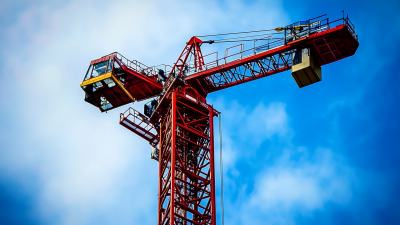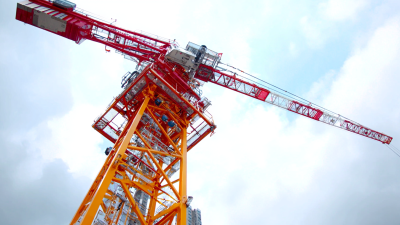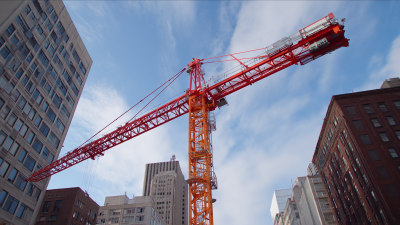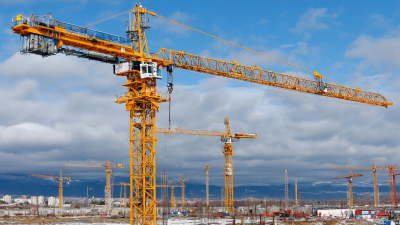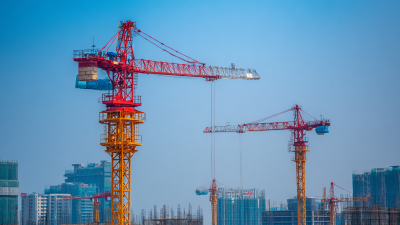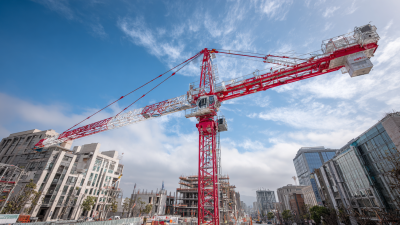In the realm of construction and engineering, tower cranes have become iconic symbols of progress and innovation. This article embarks on a visual journey, exploring the evolution of these towering giants through captivating Tower Cranes Pictures that capture their grandeur and functionality across different eras. From the early designs that revolutionized lifting capabilities to the sleek, modern structures we see today, each image tells a story of ingenuity and advancement in architectural practices. As we delve into this exploration, we aim to highlight not only the aesthetic aspects of these cranes but also the technological innovations that have transformed them into essential tools for builders and engineers worldwide. Join us as we uncover the rich history and remarkable transformation of tower cranes, reflecting on their pivotal role in shaping the skylines of our cities.
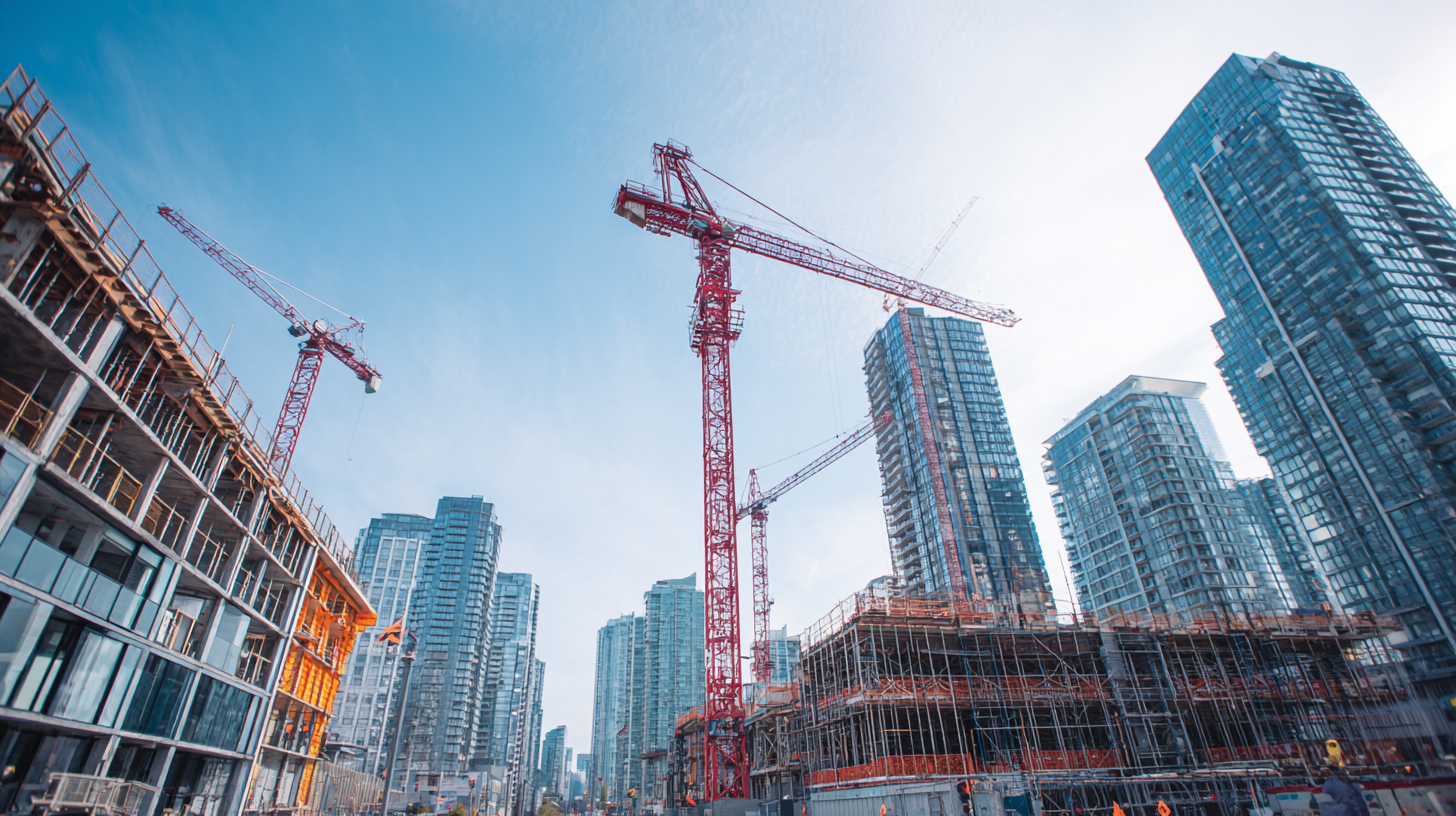
The evolution of tower cranes reflects significant advancements in engineering and construction methods over the decades. Starting from their rudimentary origins in ancient civilizations, where basic mechanical designs were utilized, tower cranes have dramatically transformed. The 20th century marked a pivotal turning point with the introduction of electric tower cranes, enhancing operational efficiency and lifting capacity. According to a report from the Global Construction Equipment Market, the global tower crane market is projected to grow at a CAGR of 4.6% from 2020 to 2025, indicating the increasing reliance on these machines across construction projects worldwide.
Notable milestones in tower crane design include the implementation of the luffing crane and the self-erecting crane, both of which have revolutionized urban construction projects by minimizing space and maximizing lift capabilities. These innovations have allowed cranes to operate in tighter spaces, crucial in dense urban environments. Recent advancements also focus on automation and smart technology integration, aimed at improving safety and operational efficiency. A study by the International Tower Crane Owner's Association highlights that incorporating automation technology can reduce operational costs by up to 15%.
Tips: When selecting a tower crane for a project, assess the site conditions and lifting requirements thoroughly. Ensuring the right crane type can enhance productivity and minimize project delays. Additionally, always consider the latest technological features that improve safety, such as load monitoring systems and remote operation capabilities, to optimize operational efficiency.
The evolution of tower cranes has been profoundly influenced by key innovations that have transformed their functionality over the years. Initially, tower cranes were simple, fixed structures, but advancements in materials and design have led to more versatile and efficient models. Innovations such as modular designs and improved lifting mechanisms have not only increased their load capacity but also enhanced safety features, making them indispensable in modern construction.

As the construction industry embraces digital transformation, manufacturers of tower cranes are also recognizing the importance of adapting to new technologies. A phased approach to integrating digital tools can significantly improve operational efficiency. By systematically implementing digital solutions—ranging from remote monitoring systems to automated controls—manufacturers can optimize crane performance and provide real-time data to operators, thus enhancing productivity and safety on job sites. This transformation reflects a broader trend within the manufacturing sector, where digitization is crucial for staying competitive and meeting evolving market demands.
Tower cranes have long been a symbol of industrial progress, dominating skylines and enabling monumental construction projects. As we embark on a visual journey through the decades, it's fascinating to note that the tower crane industry has evolved significantly, both in design and functionality. According to a report by the World Crane and Heavy Equipment Market, the global market for tower cranes was valued at approximately $4.3 billion in 2022 and is expected to grow due to increasing urbanization and infrastructure developments.

In the 1960s, tower cranes were relatively simple structures, often manually operated. However, advancements in technology have led to the introduction of computer-controlled systems and enhanced safety features. Contemporary models, like the luffing jib crane, have remarkable lifting capacities, some reaching up to 20 tons, which revolutionizes their application in complex urban environments.
Tips: When selecting a tower crane for your project, consider the maximum height and the lifting capacity required, as these will directly impact efficiency and safety. Additionally, keeping abreast of innovations in crane technology can lead to cost savings over time, as modern equipment tends to offer better fuel efficiency and reduced operational costs. Always consult with industry specialists to ensure compliance with the latest safety regulations and standards.
The evolution of tower cranes has been profoundly influenced by advancements in technology, which have enhanced their functionality and safety. Recent studies indicate that crane operations in modular integrated construction (MiC) showcase fresh perspectives on safety operations, suggesting that the implementation of innovative technologies can reduce accident rates significantly in an industry notorious for its hazards. In fact, the construction industry has one of the highest accident rates, highlighting the urgent need for safety improvements.
By integrating smart technology, construction sites can not only monitor their equipment more effectively but also proactively address potential risks.
The introduction of large-scale electric cranes represents another significant technological leap. This advancement not only minimizes the environmental impact of construction activities but also optimizes the operation of cranes in tasks such as offshore wind installations. Research has shown that understanding wind loads and seismic impacts is crucial for the efficiency and safety of tower cranes. By conducting performance analysis on different mast types and their bracing configurations, engineers are better equipped to design cranes that withstand extreme conditions, thus improving safety and operational reliability on construction sites. This continual evolution of tower crane technology not only enhances efficiency but also sets a new standard for safety and sustainability within the construction industry.
Operating modern tower cranes safely is crucial, as these towering machines have become essential in construction projects worldwide. Drawing lessons from the past can significantly enhance safety protocols. Historically, crane accidents were often attributed to a lack of proper training, inadequate maintenance, and poor communication among the crew. Emphasizing thorough operator training is vital—modern operators should not only be skilled but also well-versed in the historical context of crane operations to understand the implications of oversight.
Additionally, regular maintenance schedules and inspections should be enforced, reflecting practices developed from past experiences with crane malfunctions. Implementing a robust communication system within the team can further mitigate risks; lessons learned from previous accidents highlight the importance of clear and open lines of communication on job sites. By integrating historical insights into current operational practices, we can foster a culture of safety that minimizes hazards and promotes the effective use of tower cranes in modern construction settings.
